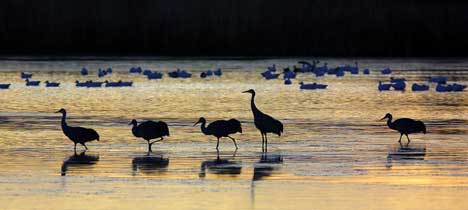How Big is That Camera’s Engine?
The first five years or so of the digital camera horserace was dominated by a competition by manufacturers over who had the most megapixels. It was therefore assumed by most photographers that a 2MP camera was better than a 1MP camera; that a 5MP camera was better than a 3MP camera, and so on.
This may have been true in those long-ago years of 1996 ‚2001 (he said facetiously), but today there are many other factors to be considered. Don’t misunderstand; the number of megapixels is still important. But increasingly less-so as manufacturers start to address the needs of different segments of the marketplace.
Horsepower & Megapixels
In the world of automobiles we are all familiar with the issue of horsepower. More is usually a good thing. But, unless we’re planning on towing a huge house-trailer, or running the racetrack, horsepower is not the primary measure of automotive goodness. Unless we have specific needs horsepower must be considered alongside handling, styling, comfort, cargo capacity and a myriad of other factors.
Photographed with Canon D30 at ISO 400. 1/125th sec @ f/2.8 with a Canon 300mm f/2.8L IS . RAW Mode.
All Megapixels Are Not Created Equal
The biggest fallacy among photographers first entering the rapidly evolving world of digital imaging is that a megapixel is a megapixel.It is not. There are a multitude of other factors to consider. A few of these are…
CCD Vs. CMOS technology
The size of the pixels themselves,which relates to…
The size of the array, even when the pixel count is the same. (Some are smaller than your smallest fingernail; some are the size of a full 35mm frame)
The firmware and software supporting the imaging chip
I’m not an engineer. My knowledge of these matters is based on what I read, discussions with product designers and most importantly hands-on experience with a variety of products.
Trust me when I say that there isno wayto compare two cameras based solely on a megapixel count. To do so is no different than comparing a truck and a sports car simply because they have the same horsepower ratings.
With the introduction of 5MP point-and-shoots many unsophisticated buyers believe that these must be inherently able to outperform cameras that have a smaller maximum pixel count.Wrong!
Keep in mind that theCanon EOS-1D, a 4.1 megapixel SLR, has pixels that are12 timeslarger than the pixels on Canon’s own 4MP consumer camera, theG2. For a variety of reasons this makes a huge difference in image quality, but is not something that camera store salesman will mention. (They probably don’t even know this themselves.)
As another example of why pixel count alone is no determinate of image quality‚ many of the current high-end $20,000+ digital backs used on medium and large format studio cameras are capable of producing images 30X40" in size, or larger, that are visually stunning. If you haven’t seen such prints you simply wouldn’t credit how good they are. They can put film to shame. Yet, many such backs use just a 6MP chip. Yup. Just 6MP.
So, the next time someone asks you if a 5 MPWhatsiflexis better than a 4.8 MPWhositblad, help them understand that the only way to know is to see actual output from each camera. Specs alone simply don’t tell the whole story, not even half of it.
An Analogy
Canon D30 @ ISO 100 using a 400mm f/4 IS DO lens. 1/800 sec @ f/5.
In addition to specs not telling the whole story, sometimes measurements don’t either. That’s why personal evaluation is the only reliable way of making a purchasing decision‚ particularly at the high end.
Here is an example from the world of audio. THD (total harmonic distortion) can be measured in an audio amp, and one would pre-suppose that a lower number would produce an amp that sounds better. That’s what many manufacturers would have one believe. But, as any serious audiophile knows, during the past 20 years amps have been produced with THD numbers that are in the range of .0005, yet amps with measured THD ratings of .05 or even higher can actuallysoundsignificantly better.
That’s because measurements don’t tell the whole story. For example tube amps operating inClass Aput out mostly even-order harmonics. But odd-order harmonics, even if they are two orders of magnitude lower, can still make an amp sound harsh. (Let’s not start an audiophile debate. This is just by way of example).
So, just like audiophiles have long learned totrust their ears, photographers must learn totrust their eyes. Size matters. But it’s not the only thing that matters.
Specs and measurements only tell part of the story‚ especially in the world of digital imaging. See for yourself. Decide for yourself. Don’t trust the marketing hype, and don’t trust everything that you read online.
Two other perspectives on the issue of resolution can be found in the articles
Understanding Resolution
and
Digital Camera Resolution Demystified
For a much more comprehensive exploration of this subject
look atMore — Understanding Resolution
You May Also Enjoy...
Death Valley Sunset
Please use your browser's BACK button to return to the page that brought you here.


